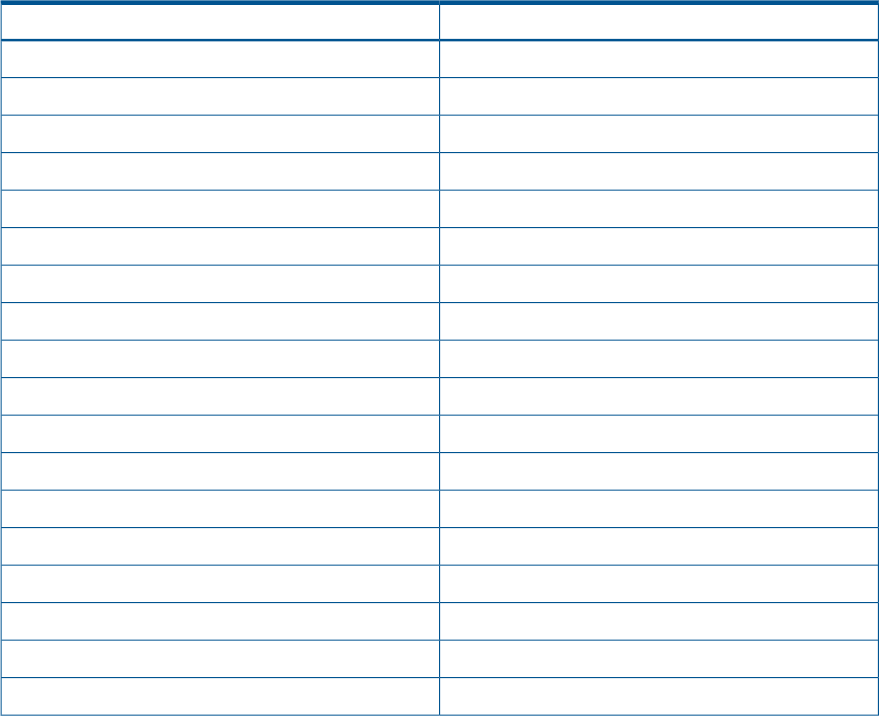HP Hitachi ShadowImage for Mainframe User Guide (T5213-96032, November 2011)
Table Of Contents
- Hitachi ShadowImage™ for Mainframe User's Guide
- Contents
- 1 Overview of Hitachi ShadowImage™ for Mainframe
- 2 About ShadowImage for Mainframe Operations
- 3 Interoperability with other Products and Functions
- Virtual LVI
- Cache Residency Manager
- Volume Security
- Volume Retention Manager
- XP Auto LUN
- HP XP External Storage Software
- Hitachi TrueCopy™ for Mainframe
- XP Continuous Access Journal Software™ for Mainframe
- TrueCopy for Mainframe and Universal Replicator for Mainframe
- HP XP for Compatible Extended Remote Copy (XRC) Software
- Concurrent Copy
- 4 Preparing for ShadowImage for Mainframe Operations
- 5 Using the ShadowImage for Mainframe GUI
- 6 Performing ShadowImage for Mainframe Operations Using Remote Web Console
- Configuring the Volume List
- Changing or Deleting the Settings in Preview List
- Setting or Resetting the Reserve Attribute
- Setting Options
- Configuring CTGs
- Adding Pairs
- Splitting Pairs
- Using PPRC Commands to Split, Resynchronize, and Delete Pairs in a CTG
- Suspending Pairs
- Resynchronizing Pairs
- Deleting Pairs
- Viewing Detailed Volume and Pair Information
- Viewing the Number of Pairs and License Information
- Viewing Pair Operations History
- 7 Performing ShadowImage for Mainframe Pair Operations Using XP for Business Continuity Manager Software
- 8 Performing ShadowImage for Mainframe Pair Operations Using PPRC
- 9 Troubleshooting
- 10 Support and Other Resources
- Glossary
- Index

• The capacity of each volume used to create a pair (this is the capacity specified as the CVS
or customized volume size)
Use the following expression to calculate the total number of the differential tables and pair
tables per pair.
Total number of the differential tables per pair = ((X) + (Y)) × 15 ÷ (Z)
(X): The number of the cylinders of the volume
(Y): The number of the control cylinders (see Table 15 (page 45))
(Z): 20,448 (The number of the slots that can be managed by a differential table)
Round up the number to the nearest whole number. For example, in case of a volume which
emulation type is 3390-3, and when provided that the number of the cylinders of the divided
volume is 3,390 ((X) in the expression above), the calculation of the total number of the
differential table is as follows.
(3,339 + 6) × 15 ÷ 20,448 = 2.4537...
When you round up 2.4537 to the nearest whole number, it becomes 3. Therefore, the total
number of the differential table for one pair is 3 when emulation type is 3390-3.
You may use 36 differential table per one pair table. Therefore, the total number of the pair
tables is 1 when emulation type is 3390-3. For example, if the emulation type is 3390-M and
the number of the cylinders of the volume is the default value, the number of pair tables is 2.
However, only the emulation type 3390-M can be used, if you use plural pair tables on a
mainframe system.
Table 15 (page 45) shows the number of the control cylinders according to the emulation
types.
Table 15 Number of the Control Cylinders According to the Emulation Types
Number of the Control CylindersEmulation Type
73380-3
73380-3A
73380-3B
73380-3C
223380-F
73380-K
73380-KA
73380-KB
73380-KC
63390-3
63390-3A
63390-3B
63390-3C
63390-3R
253390-9
253390-9A
253390-9B
253390-9C
Assessing ShadowImage for Mainframe Requirements 45










